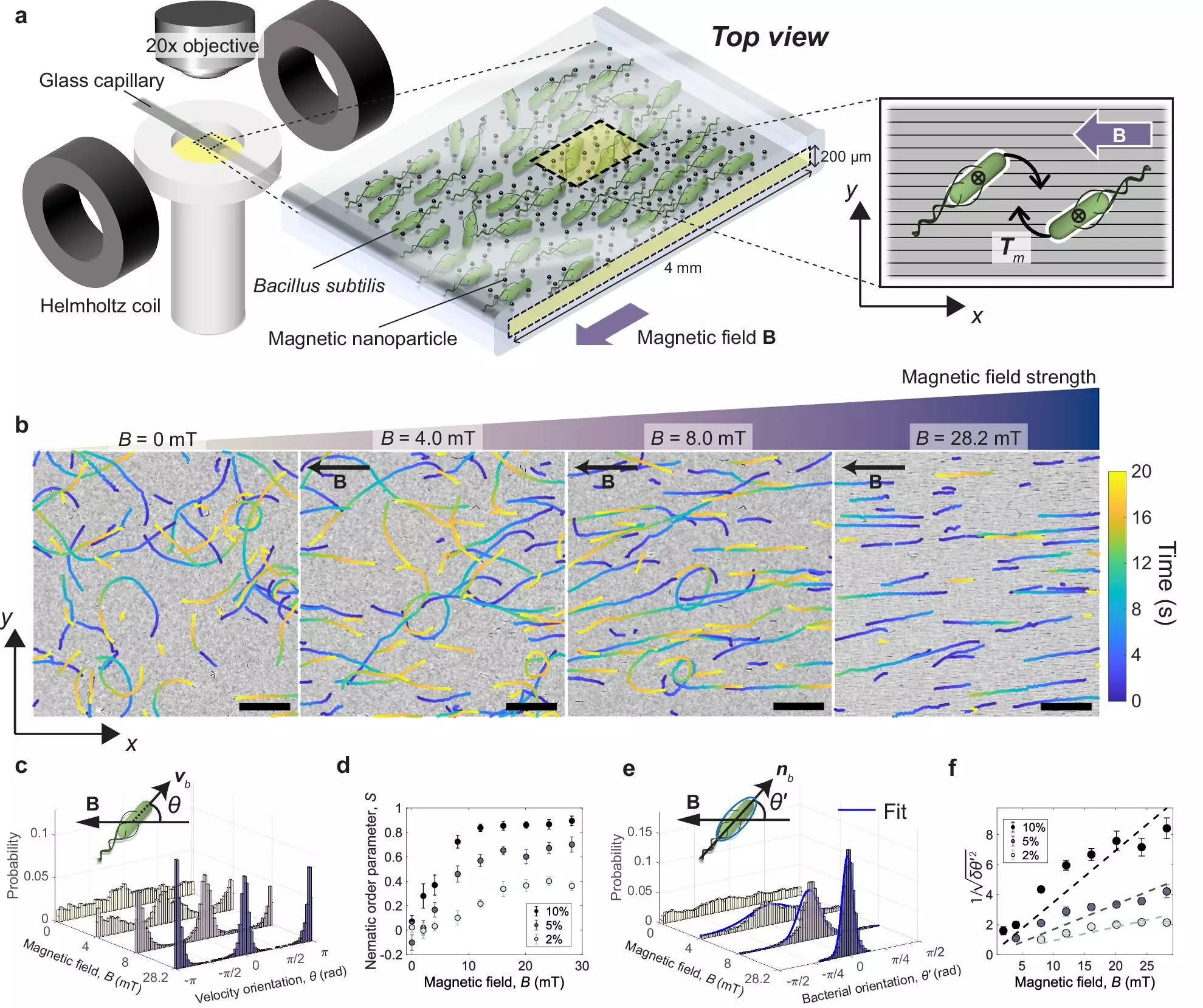In a groundbreaking study conducted at Aalto University in Finland, researchers have discovered a novel method to manipulate the movement of bacteria using magnetic fields. This innovative approach not only allows for the alignment of bacteria but also opens up new avenues for research in various scientific disciplines. The findings of this study, published in the journal Communications Physics, offer insights into the behavior of bacteria in response to external stimuli, shedding light on the dynamics of active matter at a microscopic level.
Unlike magnetotactic bacteria that possess intrinsic magnetic properties, the bacteria used in this study are non-magnetic. To manipulate their movement, researchers introduced millions of magnetic nanoparticles into a liquid medium containing the bacteria. When magnets are activated, creating a magnetic field, the bacteria are coerced to align themselves with the field to minimize energy expenditure. This alignment is crucial as it exerts a torque on the bacteria, causing them to orient themselves in a specific direction. The strength of the magnetic field determines the degree of alignment, with higher field strengths leading to a more pronounced organization of bacteria.
The researchers observed that the density of bacteria in the suspension affects their alignment in response to the magnetic field. At high population densities, the presence of multiple swimming bacteria creates “active turbulence,” a phenomenon characterized by fluid flow disturbances similar to vortices in turbulent flows. This active turbulence poses a challenge in achieving optimal bacterial alignment, necessitating stronger magnetic fields to overcome the disruptive effects caused by the collective movement of bacteria. Understanding the interplay between population density and alignment behavior provides valuable insights into complex fluid dynamics in bacterial suspensions.
While the ability to manipulate bacterial alignment may seem like a fascinating scientific feat, its implications extend far beyond mere observation. The precise control of bacterial movement, coupled with the study of active turbulence, holds immense potential in the development of self-sustaining materials, microrobotics, and targeted drug delivery systems. By harnessing the collective behavior of bacteria, researchers can explore new avenues for energy harvesting, material transport, and controlled drug release at a microscopic scale. This groundbreaking research paves the way for innovative applications in various fields, demonstrating the versatility of magnetic manipulation techniques beyond bacterial systems.
Looking ahead, the researchers plan to delve further into the dynamics of bacterial alignment by investigating the effects of dynamic magnetic fields, such as rotating fields, on bacterial behavior. By exploring the impact of varying magnetic field configurations on bacterial movement, the researchers aim to gain deeper insights into the underlying mechanisms governing bacterial responses to external stimuli. Additionally, the integration of magnetic manipulation techniques in studies on phase transitions and condensed matter physics holds promise for advancing our understanding of complex material behaviors and emergent phenomena in active matter systems.
The utilization of magnetic fields to control bacterial movement represents a significant breakthrough in the field of bacterial research. By elucidating the mechanisms underlying bacterial alignment and active turbulence, researchers have unlocked new possibilities for studying complex material behaviors and dynamic patterns in active matter systems. The interdisciplinary nature of this research not only expands our knowledge of bacterial dynamics but also paves the way for innovative applications in fields ranging from materials science to biotechnology. As we continue to explore the potential of magnetic manipulation in bacterial research, the opportunities for groundbreaking discoveries in active matter physics are limitless.



Leave a Reply